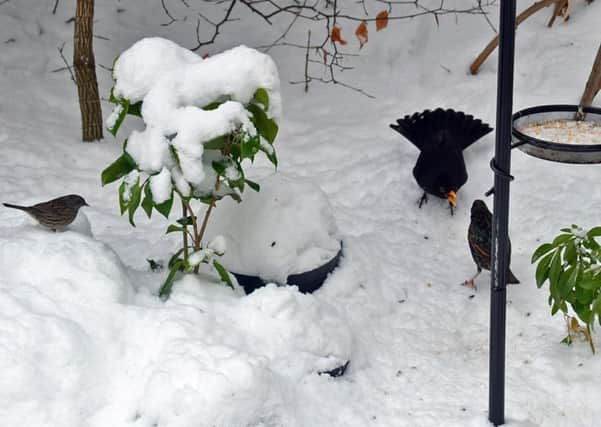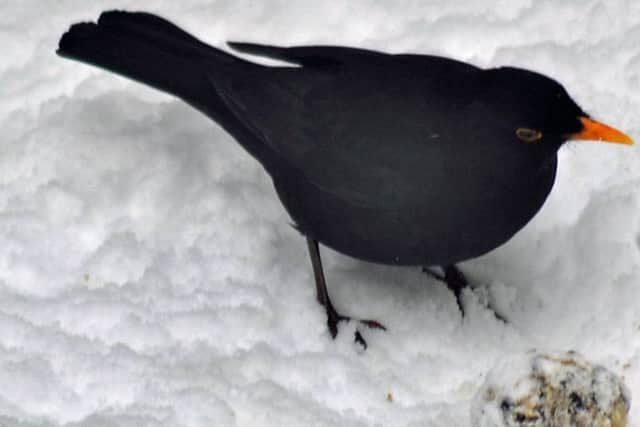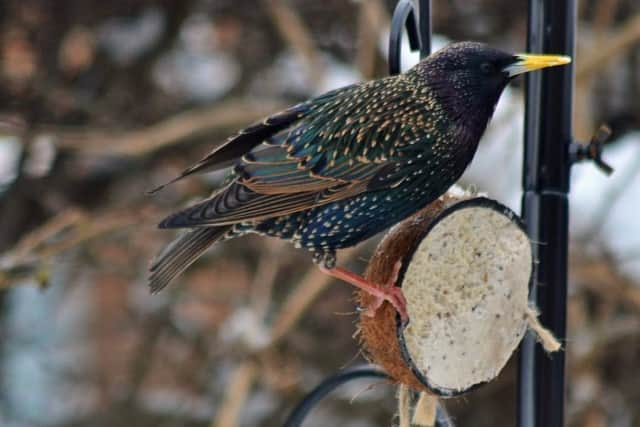Gardening: The importance of feeding birds during cold weather


It’s vital to feed birds in winter, especially during extreme spells of weather like this one.
This time there’s a real double whammy – sub-zero temperatures and snow burying feed plus this weather system has landed late in the season, when there are very few natural resources left.


Advertisement
Hide AdAdvertisement
Hide AdI always feed the birds but recently invested in a feeder for £7.50 from Wilko.
It’s amazing the change in behaviour a cold snap brings about. We did have three resident starlings – two adults and a juvenile.
However, the word’s got around that I’m the sap who’s putting the extra food out – at one point, there were 13 scrapping for food on the feeder!
As well as fighting with each other, the resident male blackbird was nonplussed by their appearance, as were the coal and blue tits, who were forced out altogether.


Advertisement
Hide AdAdvertisement
Hide AdThanks to Gary Welford for the pictures. If you want to know more about what and what not to feed birds (don’t give them bread), check out my in-depth guide on https://www.mandycanudigit.com/2016/12/06/feeding-birds-in-winter/
GETIN TOUCH
l For more information, plus cook what you grow, recipes, environmental news and more, log on to www.mandycanudigit.com (now smartphone friendly), follow me on Twitter @MandyCanUDigIt or you can like me on my Facebook page at Mandycanudigit
JOBS FOR THE WEEKEND


Obviously, what you can do is severely limited by snow-covered, frozen ground and the eventual waterlogging when it all melts. However, there are still jobs to do indoors...
Continue chitting early and maincrop potatoes.
This is the start of the main sowing period (March-May) for a huge variety of hardy annuals, half-hardy annuals and vegetables. Try starting crops off in modules in a cold greenhouse or propagator. If in doubt, put it off!
Advertisement
Hide AdAdvertisement
Hide AdSow seeds in modules/pots in an unheated greenhouse: broad beans, leeks, lettuce, rocket, coriander, peas and Swiss chard.


Sow sweet peppers, chillies, tomatoes, cucumbers, aubergines, celery and globe artichokes in a propagator..
Plant onion sets in modular trays of compost, raising plants under cover to plant out later.
Aphids can multiply rapidly under glass. Protect sweet pea plants in particular, as they can get sweet pea viruses, which are transmitted by the sap suckers.
Advertisement
Hide AdAdvertisement
Hide AdPrune back stems on pot-grown overwintered fuchsias, and place them in a well-lit, warm spot to re-shoot. Pot them on in fresh compost and start feeding six to eight weeks later.
If you have seedlings and cuttings in the greenhouse, make sure they are getting the maximum light, or they will become weak and leggy. Turn them once a day so that they get light on both sides.